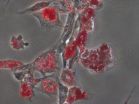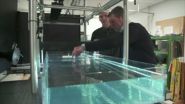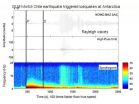(Press-News.org) While a rise in cesarean section (C-section) delivery rates due to breech presentation has improved neonatal outcome, 40% of term breech deliveries in the Netherlands are planned vaginal deliveries. According to a new Dutch study that is published today in Acta Obstetricia et Gynecologica Scandinavica, a journal of the Nordic Federation of Societies of Obstetrics and Gynecology, there is a 10-fold increase in fetal mortality in vaginal delivery for breech presentation compared to elective C-section.
Up to 4% of deliveries are breech births—when the baby is delivered buttocks or feet first, instead of in the head-first position. A 2000 study by Hannah et al. was the largest, randomized controlled trial to examine the type of deliver on mother and infant outcomes. After the term breech trial reported a significant decrease in perinatal mortality among women who had a planned C-section compared to those opting for elective vaginal delivery, C-section rates increased dramatically.
In fact, medical evidence found that following publication of the term breech trial results, elective cesarean rates in Australia increased to 94% (2008) and in the Netherlands that rate rose from 50% to 78%. In the U.S., the overall cesarean rate climbed nearly 60% from 1996 to 2009 and in 2012 was at 33% of all deliveries according to the Centers for Disease Control and Prevention (CDC).
"As an obstetrician, ensuring the health and safety of the mother and infant during child birth is of the utmost importance," said lead study author Dr. Floortje Vlemmix from the Department of Obstetics and Gynecology, Academic Medical Center, University of Amsterdam in the Netherlands. "Our study focuses on understanding if the increase in ceseareans following the term breech study had any impact on neonatal outcomes."
For this retrospective study, researchers studied 58,320 women who had term breech deliveries at hospitals in the Netherland. The group included singleton term breech babies delivered between 37 and 42 weeks, but excluded infants who had any birth defects (congenital malformations) or stillbirths (antenatal death). Researchers used data from the Dutch national perinatal registry from 1999 to 2007, which includes 96% of all births in the Netherlands.
Findings indicate that elective C-section rates increased from 24% to 60%, resulting in a decrease of infant mortality from 1.3/1000 to 0.7/1000. Perinatal mortality remained the same in the group of planned vaginal deliveries. Researchers determined that there needed to be 338 cesareans to prevent one perinatal death. Further analysis could not identify pregnancy related factors that placed women at low versus high risk of poor neonatale outcome during vaginal breech birth.
"While elective C-section has improved neonatal outcomes there is still a good number of women who attempt vaginal birth," concludes Dr. Vlemmix. "Our findings suggest there is still room for improvement to prevent unnessary risk to the infant. We recommend using measures to turn the baby (external cephalic version) to prevent breech presentation at birth and counselling women who want to proceed with a vaginal breech birth."
INFORMATION:
This study is published in Acta Obstetricia et Gynecologica Scandinavica. Media wishing to receive a PDF of this article may contact sciencenewsroom@wiley.com
Full citation: "Term Breech Deliveries in The Netherlands: Did the Increased Caesarean Rate Affect Neonatal Outcome? A Population Based Cohort Study." Floortje Vlemmix, Lester Bergenhenegouwen, Jelle M. Schaaf, Sabine Ensing, Ageeth N. Rosman, Anita C.J. Ravelli, Joris A.M. van der Post, Arno Verhoeven, Gerard H. Visser, Ben Willem M. Mol and Marjolein Kok. Acta Obstetricia et Gynecologica Scandinavica; Published online: August 11, 2014 (DOI: 10.1111/aogs.12449)
URL Upon Publication: http://doi.wiley.com/10.1111/aogs.12449
Author Contact:
To arrange an interview with Dr. Floortje Vlemmix, please contact Mrs. Edith Gerritsma pers@amc.nl or at +31-20-5662929.
About the Journal
Acta Obstetricia et Gynecologica Scandinavica is the official scientific journal of the Nordic Federation of Societies of Obstetrics and Gynecology (NFOG). It is a clinically oriented journal that covers all aspects of obstetrics, gynecology and reproductive health, including perinatology, gynecologic endocrinology, female urology and gynecologic oncology. The journal is published in English and includes: editors´ messages, editorials, Acta commentaries, Acta reviews and original articles under the main categories of investigation, pregnancy, birth, fertility, infection, gynecology, gynecologic urology, oncology and surgery. The journal is published by Wiley on behalf of the NFOG. For more information, please visit http://wileyonlinelibrary.com/journal/aogs.
About Wiley
Wiley is a global provider of content-enabled solutions that improve outcomes in research, education, and professional practice. Our core businesses produce scientific, technical, medical, and scholarly journals, reference works, books, database services, and advertising; professional books, subscription products, certification and training services and online applications; and education content and services including integrated online teaching and learning resources for undergraduate and graduate students and lifelong learners.
Founded in 1807, John Wiley & Sons, Inc. (NYSE: JWa, JWb), has been a valued source of information and understanding for more than 200 years, helping people around the world meet their needs and fulfill their aspirations. Wiley and its acquired companies have published the works of more than 450 Nobel laureates in all categories: Literature, Economics, Physiology or Medicine, Physics, Chemistry, and Peace. Wiley's global headquarters are located in Hoboken, New Jersey, with operations in the U.S., Europe, Asia, Canada, and Australia. The Company's website can be accessed at http://www.wiley.com.
Breech babies have higher risk of death from vaginal delivery compared to C-section
2014-08-11
ELSE PRESS RELEASES FROM THIS DATE:
Spectacular 3-D sketching system revolutionizes design interaction and collaboration
2014-08-11
Collaborative three-dimensional sketching is now possible thanks to a system known as Hyve-3D that University of Montreal researchers are presenting today at the SIGGRAPH 2014 conference in Vancouver. "Hyve-3D is a new interface for 3D content creation via embodied and collaborative 3D sketching," explained lead researcher Professor Tomás Dorta, of the university's School of Design. "The system is a full scale immersive 3D environment. Users create drawings on hand-held tables. They can then use the tablets to manipulate the sketches to create a 3D design within the space". ...
Discovery of new form of dystrophin protein could lead to therapy for some DMD patients
2014-08-10
Scientists have discovered a new form of dystrophin, a protein critical to normal muscle function, and identified the genetic mechanism responsible for its production. Studies of the new protein isoform, published online Aug. 10 in Nature Medicine and led by a team in The Research Institute at Nationwide Children's Hospital, suggest it may offer a novel therapeutic approach for some patients with Duchenne muscular dystrophy, a debilitating neuromuscular condition that usually leaves patients unable to walk on their own by age 12.
Duchenne muscular dystrophy, or DMD, ...
Scientists unlock key to blood vessel formation
2014-08-10
Scientists from the University of Leeds have discovered a gene that plays a vital role in blood vessel formation, research which adds to our knowledge of how early life develops.
The discovery could also lead to greater understanding of how to treat cardiovascular diseases and cancer.
Professor David Beech, of the School of Medicine at the University of Leeds, who led the research, said: "Blood vessel networks are not already pre-constructed but emerge rather like a river system. Vessels do not develop until the blood is already flowing and they are created in response ...
Newly discovered heart molecule could lead to effective treatment for heart failure
2014-08-10
INDIANAPOLIS -- Researchers have discovered a previously unknown cardiac molecule that could provide a key to treating, and preventing, heart failure.
The newly discovered molecule provides the heart with a tool to block a protein that orchestrates genetic disruptions when the heart is subjected to stress, such as high blood pressure.
When the research team, led by Ching-Pin Chang, M.D., Ph.D., associate professor of medicine at the Indiana University School of Medicine, restored levels of the newly discovered molecule in mice experiencing heart failure, the progression ...
Bioengineers: Matrix stiffness is an essential tool in stem cell differentiation
2014-08-10
Bioengineers at the University of California, San Diego have proven that when it comes to guiding stem cells into a specific cell type, the stiffness of the extracellular matrix used to culture them really does matter. When placed in a dish of a very stiff material, or hydrogel, most stem cells become bone-like cells. By comparison, soft materials tend to steer stem cells into soft tissues such as neurons and fat cells. The research team, led by bioengineering professor Adam Engler, also found that a protein binding the stem cell to the hydrogel is not a factor in the differentiation ...
Pairing old technologies with new for next generation electronic devices
2014-08-10
UCL scientists have discovered a new method to efficiently generate and control currents based on the magnetic nature of electrons in semi-conducting materials, offering a radical way to develop a new generation of electronic devices.
One promising approach to developing new technologies is to exploit the electron's tiny magnetic moment, or 'spin'. Electrons have two properties – charge and spin – and although current technologies use charge, it is thought that spin-based technologies have the potential to outperform the 'charge'-based technology of semiconductors for ...
Physicists create water tractor beam
2014-08-10
VIDEO:
Physicists at the Australian National University have created a tractor beam in water. Using a simple wave generator they can create water currents which could be used to confine oil...
Click here for more information.
Physicists at The Australian National University (ANU) have created a tractor beam on water, providing a radical new technique that could confine oil spills, manipulate floating objects or explain rips at the beach.
The group, led by Professor Michael ...
2010 Chilean earthquake causes icequakes in Antarctica
2014-08-10
VIDEO:
High-frequency icequakes are shown at station HOWD in Antarctica during the distant waves of the 2010 magnitude 8.8 Chile earthquake. The triggered icequakes are indicated by the narrow vertical bands...
Click here for more information.
Seismic events aren't rare occurrences on Antarctica, where sections of the frozen desert can experience hundreds of micro-earthquakes an hour due to ice deformation. Some scientists call them icequakes. But in March of 2010, the ice sheets ...
Target identified for rare inherited neurological disease in men
2014-08-10
Researchers at University of California, San Diego School of Medicine have identified the mechanism by which a rare, inherited neurodegenerative disease causes often crippling muscle weakness in men, in addition to reduced fertility.
The study, published August 10 in the journal Nature Neuroscience, shows that a gene mutation long recognized as a key to the development of Kennedy's disease impairs the body's ability to degrade, remove and recycle clumps of "trash" proteins that may otherwise build up on neurons, progressively impairing their ability to control muscle ...
The grass really is greener on TV and computer screens, thanks to quantum dots
2014-08-10
SAN FRANCISCO, Aug. 10, 2014 — High-tech specks called quantum dots could bring brighter, more vibrant color to mass market TVs, tablets, phones and other displays. Today, a scientist will describe a new technology called 3M quantum dot enhancement film (QDEF) that efficiently makes liquid crystal display (LCD) screens more richly colored.
His talk will be one of nearly 12,000 presentations at the 248th National Meeting & Exposition of the American Chemical Society (ACS), the world's largest scientific society, taking place here through Thursday.
"Green grass just pops ...






